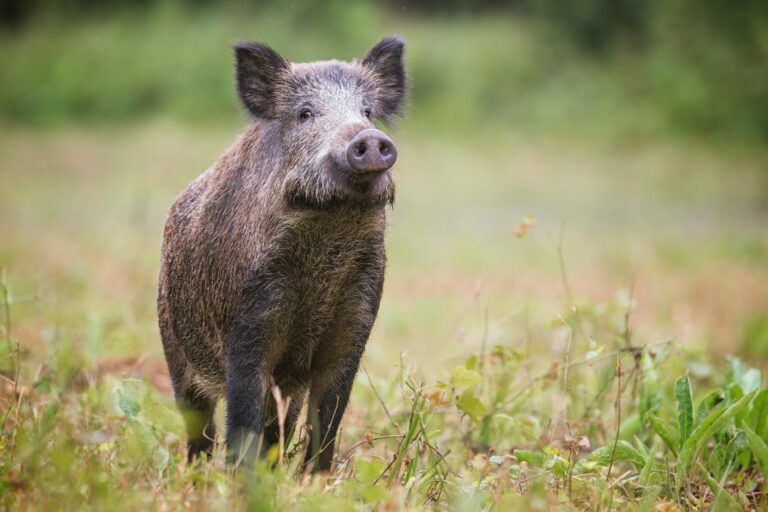Sus scrofa

Sus scrofa is the wild ancestor of the domestic pig, it can weigh up to 200 kg and reach a head-body length of up to 180 cm. The shoulder height ranges from 70 to 100 cm (Schaefer 2018). It is widespread in Europe and mainly occurs in deciduous forests. Females live in so-called sounders with their piglets, while male individuals are solitary. The fur of the piglets is striped, while adult animals are grayish-brown in summer and slightly darker in winter (Nüßlein 1996). The mating season is from October to January, and after 114-118 days, the female gives birth to between four and six piglets (Wiesner 1987).
Diet: Wild boars are omnivores. They feed on grasses, herbs, berries, mushrooms, roots, worms, snails, eggs, carrion, and many other food items they can find (Wiesner 1987).
Conservation status: According to the IUCN Red List of Threatened Species and the Red List Germany, Sus scrofa is considered “least concern”.
-
Schaefer, M (2018)Brohmer – Fauna von Deutschland. Ein Bestimmungsbuch unserer heimischen Tierwelt: Quelle & Meyer Verlag GmbH & Co.
-
Nüßlein, F (1996)Das praktische Handbuch der Jagdkunde. 14., neubearb. Aufl., Neuausg. München: BLV.
-
Wiesner, H (1987)Wildschwein. In: K Gabrisch und P Zwart (Hg.): Krankheiten der Wildtiere. Exotische und heimische Tiere in der Tierarztpraxis. Schlütersche Verlagsanstalt und Druckerei.